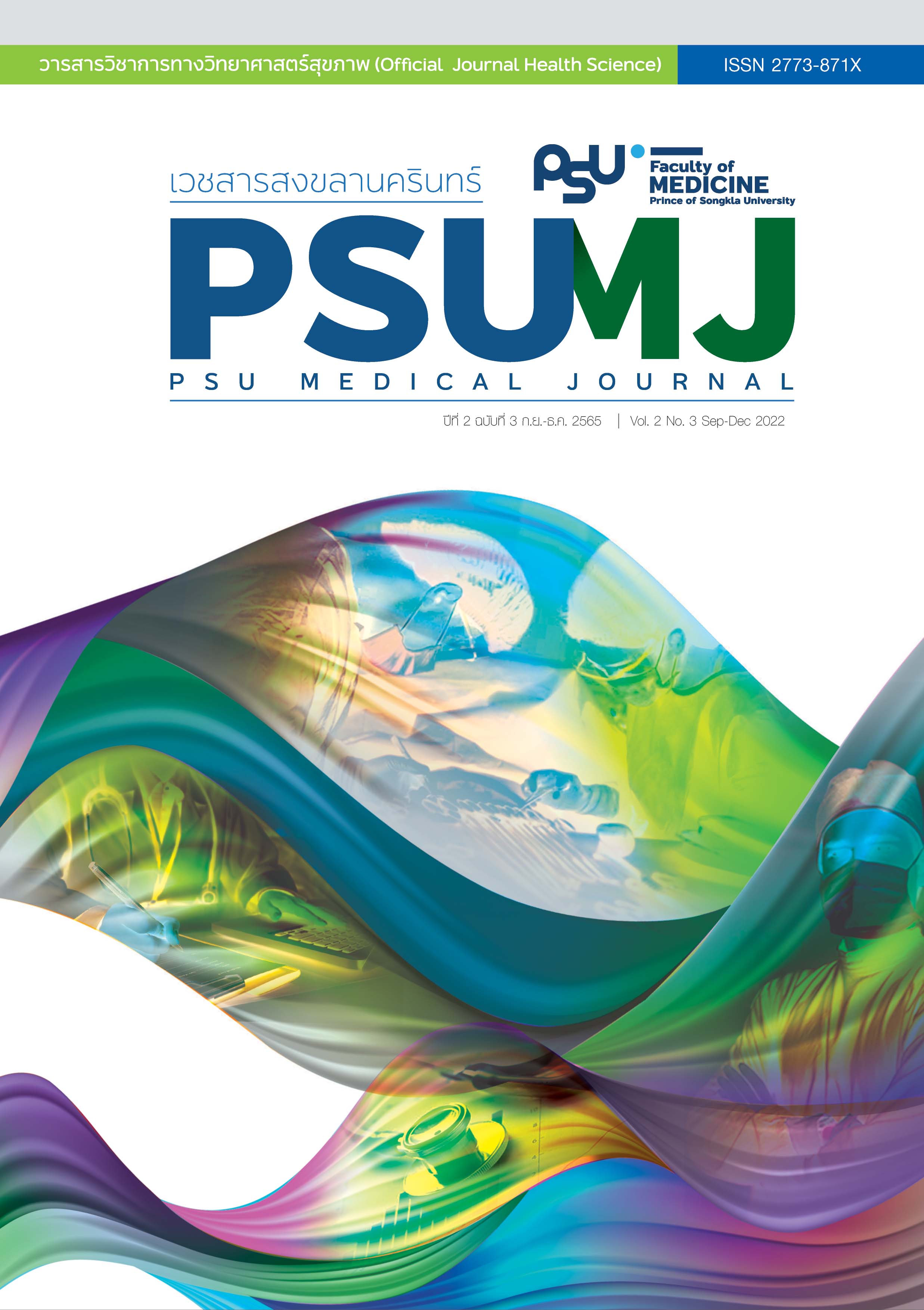Different Doses of Intrathecal Morphine on Postoperative Analgesia and Pruritus after Cesarean Section: a Prospective Randomized Triple-Blinded Trial
DOI:
https://doi.org/10.31584/psumj.2022255472Keywords:
Cesarean section, intrathecal morphine, PONV, postoperative analgesia, pruritusAbstract
Objective: Intrathecal morphine (ITM) is an effective postoperative analgesia provided after Cesarean section. However, pruritus is an undesirable side effect that disrupts maternal breast feeding. This study aimed to evaluate the effects of three different doses of ITM added to spinal bupivacaine on postoperative analgesia and opioid-related side effects in Cesarean section.
Material and Methods: This prospective randomized, triple-blinded trial was conducted in 321 patients undergoing Cesarean section. They were allocated to receive either; one intervention group; intrathecal morphine 50 mcg (IT50 group, N=98), 100 mcg (IT100 group, N=100), or 200 mcg (IT200 group, N=101), added to spinal bupivacaine for Cesarean section. The primary outcome was the incidence of pruritus in the recovery room, and then every 4 hours for 24 hours. The secondary outcomes were the pain scores at rest and during activities, time to the first analgesia, 24 hours of morphine consumption and the incidence of postoperative nausea and vomiting (PONV).
Results: Patient characteristics between the three groups were comparable. Both of the IT50 and IT100 groups had a lower incidence of pruritus, when compared with the IT200 group at all-time points, with the exception of at 24 hours; wherein, there were no differences between the three groups. Pain scores during activities were not different between the three groups. However, at rest the IT50 group had a higher pain score than those in the IT100 and IT200 groups; at 4, 8, and 16 hours. Time to the first analgesic requirement was shorter in the IT50 group (2 hours) than in the IT100 (2.4 hours) and IT200 (2.6 hours) groups (p-value=0.03). Moreover, the median [IQR] of morphine consumption in 24 hours was higher in the IT50 group [17 mg (9, 29.8)] than those in the IT100 [13 mg (5, 23.2)] and IT200 [12 mg (4, 17)] groups (p-value<0.001). However, the incidence of PONV was lower in the IT50 group compared to other groups.
Conclusion: This study demonstrates that reducing the dose of ITM to 100 mcg added to spinal bupivacaine is effective to maintain postoperative analgesic effects. Additionally, it reduces the incidence of postoperative pruritus compared to ITM at 200 mcg.
References
Gadsden J, Hart S, Santos AC. Post-Cesarean delivery analgesia. Anesth Analg 2005;101(Suppl 5):S62-9.
Swart M, Sewell J, Thomas D. Intrathecal morphine for caesarean section: an assessment of pain relief, satisfaction and side-effects. Anaesth 1997;52:373-7.
Palmer CM, Emerson S, Volgoropolous D, Alves D. Dose-response relationship of intrathecal morphine for post-Cesarean analgesia. Anesthesiology 1999;90:437-44.
Cardoso MM, Carvalho JC, Amaro AR, Prado AA, Cappelli EL. Small doses of intrathecal morphine combined with systemic diclofenac for postoperative pain control after Cesarean delivery. Anesth Analg 1998;86:538-41.
Gerancher JC, Floyd H, Eisenach J. Determination of an effective dose of intrathecal morphine for pain relief after Cesarean delivery. Anesth Analg 1999;88:346-51.
Dahl JB, Jeppesen IS, Jorgensen H, Wetterslev J, Moiniche S. Intraoperative and postoperative analgesic efficacy and adverse effects of intrathecal opioids in patients undergoing Cesarean section with spinal anesthesia: a qualitative and quantitative systematic review of randomized controlled trials. Anesthesiology 1999;91:1919-27.
Girgin NK, Gurbet A, Turker G, Aksu H, Gulhan N. Intrathecal morphine in anesthesia for Cesarean delivery: dose-response relationship for combinations of low-dose intrathecal morphine and spinal bupivacaine. J Clin Anesth 2008;20:180-5.
Milner AR, Bogod DG, Harwood RJ. Intrathecal administration of morphine for elective Caesarean section. A comparison between 0.1 mg and 0.2 mg. Anaesthesia 1996;51:871-3.
Gehling M, Tryba M. Risks and side-effects of intrathecal morphine combined with spinal anaesthesia: a meta-analysis. Anaesthesia 2009;64:643-51.
Kjellberg F, Tramer MR. Pharmacological control of opioid-induced pruritus: a quantitative systematic review of randomized trials. Eur J Anaesthesiol 2001;18:346-57.
George RB, Allen TK, Habib AS. Serotonin receptor antagonists for the prevention and treatment of pruritus, nausea, and vomiting in women undergoing Cesarean delivery with intrathecal morphine: a systematic review and meta-analysis. Anesth Analg 2009;109:174-82.
Abboud TK. Mini-dose intrathecal morphine for analgesia following Cesarean section. Anesthesiology 1988;69:805.
Sarvela J, Halonen P, Soikkeli A, Korttila K. A double-blinded, randomized comparison of intrathecal and epidural morphine for elective Cesarean delivery. Anesth Analg 2002;95:436-40.
Pakpirom J, Asampinwat T, Nuanjun K, Watanayomnaporn E. A randomized control trial of a multimodal antiemetic management for the prevention of postoperative nausea and vomiting in patients undergoing ambulatory gynecologic endoscopic surgery. J Med Assoc Thai 2017;100:549-57.
Uchiyama A, Nakano S, Ueyama H, Nishimura M, Tashiro C. Low dose intrathecal morphine and pain relief following caesarean section. Int J Obstet Anesth 1994;3:87-91.
Raffaeli W, Marconi G, Fanelli G, Taddei S, Borghi GB, Casati A. Opioid-related side-effects after intrathecal morphine: a prospective, randomized, double-blind dose-response study. Eur J Anaesthesiol 2006;23:605-10.
Chinachoti T, Nilrat P, Samarnpiboonphol P. Nausea, vomiting and pruritus induced by intrathecal morphine. J Med AssocThai 2013;96:589-94.
Nimmaanrat S, Yunuswanjsa Q. The analgesic and adverse effects of intrathecal opioids for Cesarean section: 11 years’ experience in 10,061 cases. Br J Med Med Res 2014;4:2112-18.
Carvalho FA, Tenorio SB. Comparative study between doses of intrathecal morphine for analgesia after caesarean. Braz J Anesth. 2013;63:492-9.
Terajima K, Onodera H, Kobayashi M, Yamanaka H, Ohno T, Konuma S, et al. Efficacy of intrathecal morphine for analgesia following elective Cesarean section: comparison with previous delivery. J Nippon Med School 2003;70:327-33.
Wong JY, Carvalho B, Riley ET. Intrathecal morphine 100 and 200 mug for post-Cesarean delivery analgesia: a trade-off between analgesic efficacy and side effects. Int J Obstet Anesth 2013;22:36-41.
Sultan P, Halpern SH, Pushpanathan E, Patel S, Carvalho B. The effect of intrathecal morphine dose on outcomes after elective Cesarean delivery: A meta-analysis. Anesth Analg 2016;123:154-64.
Seki H, Shiga T, Mihara T, Hoshijima H, Hosokawa Y, Hyuga S et al. Effects of intrathecal opiods on Cesarean section: a systematic review and Bayesian network meta-analysis of randomized control trials. J Anesth 2021;35:991-27.
Pangthipampai P, Dejarkom S, Poolsuppasit S, Luansritisakul C, Tangchittam S. Bilateral posterior quadratus lumborum block for pain relief after Cesarean delivery: a randomized control trial. BMC Anesthesiol 2021;21:90.
Tan HS, Taylor C, Weikel D, Barton K, Habib AS. Quadratus lumborum block for postoperative analgesia after Cesarean delivery: A systematic review with meta-analysis and trial-sequential analysis. J Clin Anesth 2020;67:110003.
Downloads
Published
How to Cite
Issue
Section
License
Copyright (c) 2022 Author and Journal

This work is licensed under a Creative Commons Attribution-NonCommercial-NoDerivatives 4.0 International License.








